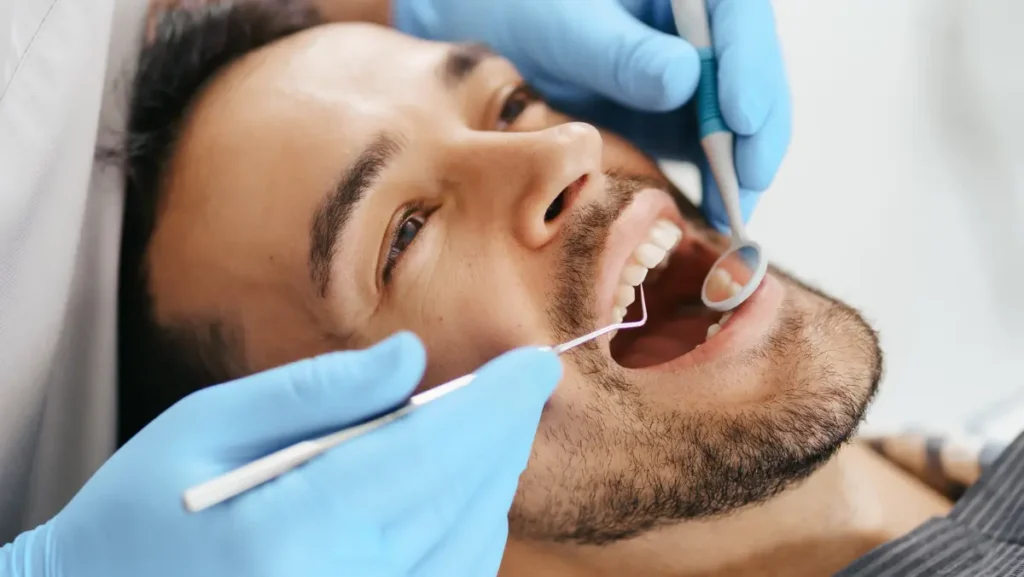Restorative dentistry focuses on repairing and restoring damaged or missing teeth to enhance oral health and function. It encompasses a range of treatments designed to improve the structure, aesthetics, and functionality of teeth, ensuring long-term dental well-being. Early intervention plays a crucial role in maintaining a child’s oral health, as untreated dental issues can lead to complications that affect their speech, nutrition, and self-confidence. Studies indicate that children with strong dental health are more likely to develop positive lifelong oral hygiene habits, reducing the risk of future complications.
Restorative procedures provide solutions for cavities, infections, and tooth loss, allowing children and teenagers to maintain their natural smiles while supporting proper dental development. With advancements in dental technology, modern treatments are now safer, more comfortable, and highly effective. By addressing dental concerns at an early stage, children can enjoy a pain-free and confident smile, reinforcing healthy habits that last a lifetime.
Tooth-Colored Fillings
Tooth-colored fillings, also known as composite fillings, offer a highly aesthetic and functional solution for treating cavities in children and teenagers. Unlike traditional silver amalgam fillings, these restorations blend seamlessly with the natural tooth, making them an ideal choice for visible teeth. The material used is durable, biocompatible, and designed to strengthen the tooth structure while preventing further decay.
- Composite fillings bond directly to the tooth structure, ensuring a secure and durable restoration while requiring minimal removal of healthy enamel, thus preserving as much of the natural tooth as possible.
- They provide a natural and aesthetically pleasing appearance, seamlessly blending with the existing tooth color and boosting confidence in children and teenagers by maintaining their bright, healthy smiles.
- These fillings are highly resistant to fractures and daily wear, ensuring long-lasting durability while offering reliable protection against reinfection and secondary cavities in the affected tooth.
Tooth-colored fillings also contribute to overall oral health by reducing post-treatment sensitivity and reinforcing weakened enamel, making the tooth stronger and less susceptible to future decay. Their mercury-free composition makes them a safer and environmentally friendly choice for pediatric dental care. By using advanced bonding techniques, dentists can restore function and aesthetics while ensuring a comfortable and minimally invasive experience for young patients.
Pulp Therapy (Baby Root Canal)
Pulp therapy, commonly referred to as a baby root canal, is a specialized treatment designed to save severely decayed or infected primary teeth. It involves removing the damaged pulp tissue, disinfecting the inner chamber, and sealing the tooth to prevent further infection. This procedure is essential for maintaining oral health and ensuring proper dental development.
- Pulp therapy preserves primary teeth until they naturally fall out at the right developmental stage, preventing premature tooth loss and avoiding misalignment of the emerging permanent teeth.
- The procedure effectively relieves pain and eliminates bacterial infection, promoting overall well-being while preventing further dental complications and the spread of infection to adjacent teeth or the jawbone.
- It plays a crucial role in supporting the development of permanent teeth by maintaining the integrity of the dental arch, ensuring proper spacing, and allowing natural tooth eruption without crowding or shifting issues.
Pulp therapy is a gentle and highly effective treatment that prevents the need for premature extractions, which could lead to orthodontic problems later in life. By saving the affected tooth, it helps children maintain proper speech development, chewing function, and overall oral harmony. Modern techniques, combined with local anesthesia and child-friendly approaches, ensure that the procedure is pain-free and comfortable, allowing children to regain their healthy smiles with minimal discomfort and stress.
Stainless Steel & Zirconia Crowns
Dental crowns provide full-coverage restoration for primary teeth that have suffered extensive decay or structural damage. Stainless steel and zirconia crowns are two highly effective options used in pediatric dentistry to restore function and aesthetics while protecting weakened teeth from further deterioration.
- Stainless steel crowns are incredibly durable and resistant to breakage, making them a cost-effective and long-lasting solution for molars, where chewing pressure is the highest, providing protection against cavities and further structural damage.
- Zirconia crowns offer an advanced alternative with a natural tooth-like appearance, making them an excellent choice for front teeth or any aesthetically important areas where preserving a child’s natural smile is a priority.
- Both types of crowns enhance the overall strength of the affected tooth, prevent fractures and additional decay, and restore proper chewing function, ensuring that children can eat comfortably without experiencing pain or discomfort.
These restorations play a vital role in preventing recurring infections and maintaining the alignment of surrounding teeth by preserving the natural spacing required for proper eruption. Crowns eliminate the need for repeated fillings by offering a comprehensive, long-term solution that withstands daily wear and tear. With advancements in dental materials and application techniques, modern crowns are now more comfortable, biocompatible, and aesthetically superior, ensuring optimal oral health for children and teenagers.
Extractions
Dental extractions are sometimes necessary to address severe decay, infection, or overcrowding. Removing a compromised tooth can help protect overall oral health and create space for proper alignment, ensuring a well-balanced and functional dentition. Dentists carefully evaluate each case to determine if an extraction is the best course of action.
- Extracting a severely decayed or infected tooth helps prevent the spread of infection to the surrounding teeth, gums, and jawbone, safeguarding the overall oral health and minimizing further dental complications.
- Removing a tooth when necessary creates space for the proper eruption of permanent teeth, preventing misalignment, overcrowding, and potential orthodontic issues that may require correction later.
- Extractions provide immediate relief from severe pain and discomfort caused by deep decay, abscesses, or impacted teeth, allowing children to resume normal activities without persistent dental pain or sensitivity.
Pediatric dental extractions are performed using gentle techniques, appropriate anesthesia, and child-friendly approaches to ensure a comfortable and stress-free experience. Post-extraction care is essential to promote healing, prevent infections, and ensure proper gum tissue recovery. By following recommended oral hygiene and dietary guidelines, children can recover quickly and maintain optimal oral health with minimal complications.
Space Maintainers
Space maintainers are essential orthodontic devices used to preserve the natural alignment of teeth following premature tooth loss. When a primary tooth is lost too early, the adjacent teeth may shift into the empty space, leading to alignment issues and future orthodontic concerns. These devices help guide the proper eruption of permanent teeth and prevent crowding or malocclusion.
- Space maintainers ensure that the correct spacing for permanent teeth is preserved, significantly reducing the likelihood of future orthodontic treatment, such as braces, by maintaining the integrity of the dental arch.
- These devices prevent unwanted shifting of adjacent teeth into the vacant space, ensuring that the natural bite remains properly aligned and functional for chewing and speech development.
- Space maintainers support speech development and efficient chewing function by ensuring that the child’s dentition remains balanced, allowing them to speak clearly and eat comfortably without difficulties caused by misaligned teeth.
Space maintainers are custom-made to fit each child’s dental needs and can be either removable or fixed, depending on the case. Regular dental check-ups are necessary to ensure that the device remains effective and is removed at the appropriate time once the permanent tooth begins to emerge. By preserving the natural positioning of teeth, space maintainers contribute to a healthy and well-aligned smile, preventing the need for extensive orthodontic correction in the future while ensuring optimal oral function.
Conclusion
Restorative dentistry plays a vital role in safeguarding the oral health of children and teenagers. By addressing dental concerns early, it prevents complications that could impact their confidence, nutrition, and overall well-being. Modern restorative techniques ensure that young patients receive safe, effective, and aesthetically pleasing treatments tailored to their specific needs.
With advancements in materials and procedures, restorative dentistry now offers long-lasting solutions that promote strong and healthy smiles. From tooth-colored fillings and pulp therapy to crowns, extractions, and space maintainers, each treatment supports proper dental development. Encouraging good oral hygiene habits and regular dental visits further enhances the success of these treatments, ensuring that children grow up with bright, functional, and confident smiles.





